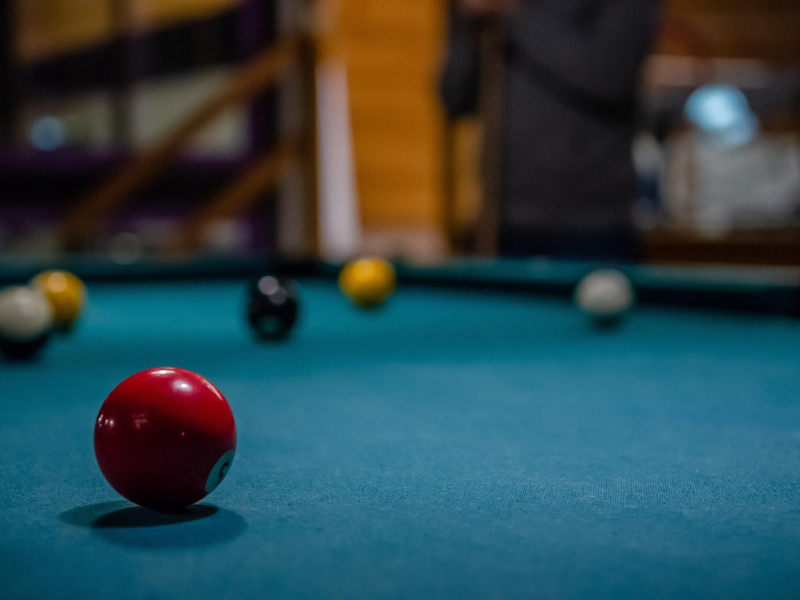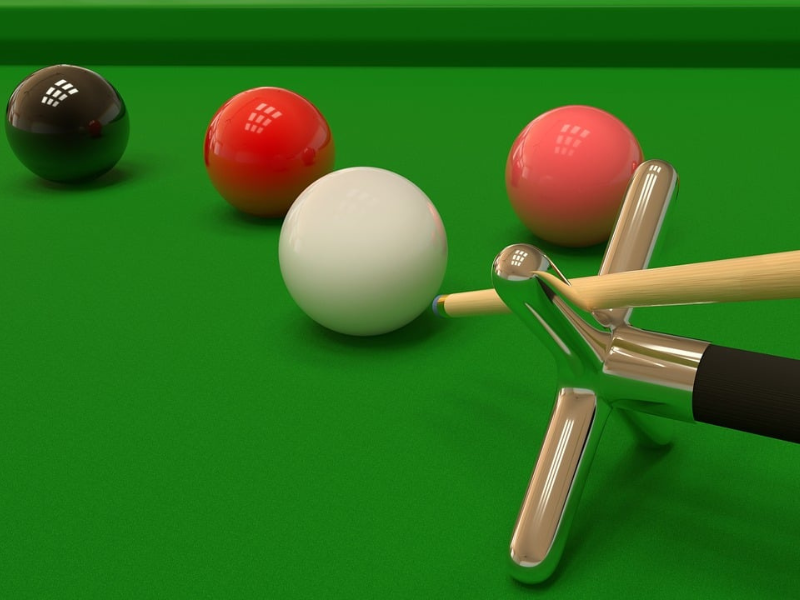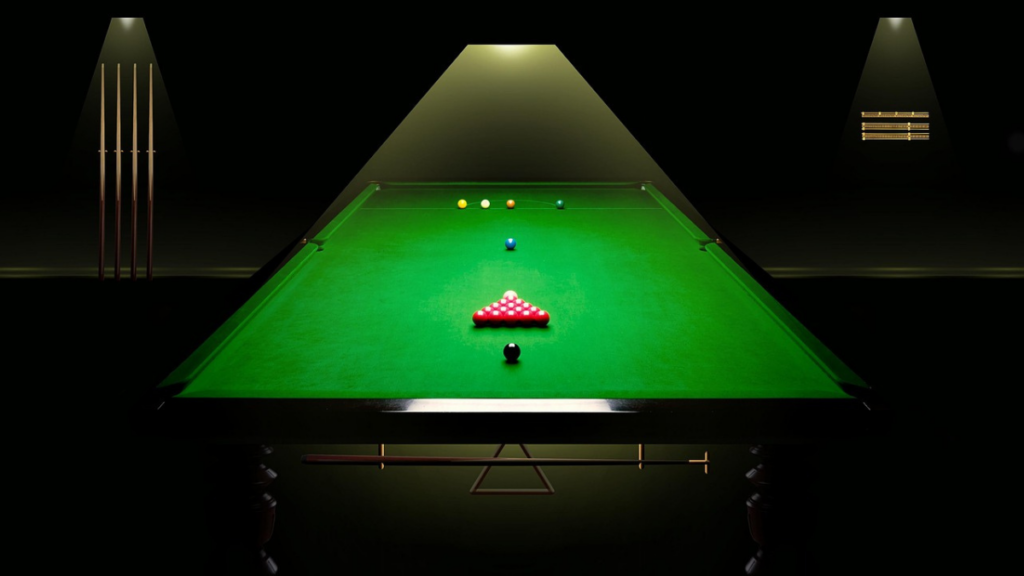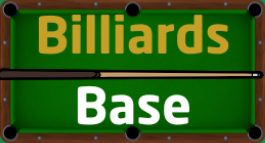Snooker table size fundamentally shape every aspect of the game, from the precision required for long potting to the strategic complexity of safety play.
Table size directly impacts gameplay difficulty, skill development, and the authentic snooker experience. A full-size championship table demands different techniques and strategies compared to smaller alternatives, while space requirements and costs vary dramatically between sizes. For serious players, practicing on incorrectly sized tables can actually hinder development of proper technique and distance judgment.
We’ll explain standard snooker table dimensions, compare different sizes available, and help you choose the right table for your space, skill level, and goals. By understanding these specifications, you’ll make informed decisions whether buying, playing, or simply appreciating the strategic complexities that table size brings to this magnificent sport.
What is the Standard Size of a Snooker Table?

The official full-size snooker table, as specified by the World Professional Billiards and Snooker Association (WPBSA), measures 12 feet by 6 feet (3.658m × 1.829m) for the playing surface. However, the overall table footprint is larger when including cushions and framework.
Official WPBSA Specifications:
Playing Surface:
- Length: 12 feet (3.658m)
- Width: 6 feet (1.829m)
- Playing surface area: 72 square feet
Overall Table Dimensions:
- Length: 12 feet 8.5 inches (3.87m)
- Width: 6 feet 8.5 inches (2.04m)
- Height: 2 feet 10 inches to 2 feet 10.5 inches (86.4-87.1cm)
Additional Key Measurements:
- Pocket openings: 3.5 inches (89mm) corner pockets, 4.1 inches (104mm) center pockets
- Cushion height: 1.4-1.5 inches (36-38mm) from playing surface
- Minimum cueing space around table: 5 feet (1.52m) on all sides
The precision required for these measurements reflects snooker’s demanding nature – even small variations can significantly affect ball behavior, pocket angles, and overall gameplay quality.
Common Snooker Table Sizes Explained
| Table Size | Playing Surface | Overall Dimensions | Recommended Room Size | Typical Usage |
| 12ft (Full) | 12′ × 6′ | 12’8.5″ × 6’8.5″ | 22′ × 16′ | Professional, serious clubs |
| 10ft | 10′ × 5′ | 10’8″ × 5’8″ | 20′ × 15′ | Club level, advanced practice |
| 9ft | 9′ × 4.5′ | 9’8″ × 4’11” | 19′ × 14′ | Home clubs, intermediate play |
| 8ft | 8′ × 4′ | 8’8″ × 4’8″ | 18′ × 14′ | Home use, learning |
| 6ft | 6′ × 3′ | 6’8″ × 3’8″ | 16′ × 13′ | Compact spaces, children |
12ft (Full-Size/Championship)
The championship table represents snooker at its finest. Every professional snooker tournament from the World Championship at the Crucible to local ranking events uses these exact specifications. As you’d expect, professional tournaments are very particular about standardising the game through snooker rules, and that includes table size.
Key characteristics:
- Maximum strategic complexity with longest possible shots
- Full cushion angles and ball physics as designed
- Requires advanced technique for consistent potting
- Demands significant room space and higher investment
The most famous snooker players exclusively practice and compete on full-size tables, making this the only choice for serious competitive preparation. The table’s proportions create the perfect balance between offensive opportunity and defensive challenge that defines championship snooker.
10ft, 9ft, 8ft, and 6ft Tables
10ft Tables: Popular in semi-professional clubs and dedicated snooker venues. Offers nearly full strategic complexity while requiring slightly less space. Many serious players find 10ft tables an acceptable compromise for home installation, maintaining most of the game’s essential characteristics.
9ft Tables: The most common size for home snooker rooms. Provides good strategic depth while fitting more residential spaces. Ball physics remain similar to full-size, though long shots become more manageable. This size offers the best balance for serious home players.
8ft Tables: Excellent for learning fundamental techniques and family play. Significantly easier potting encourages beginners while still requiring proper cueing technique. Popular choice for multi-purpose game rooms where space efficiency matters.
6ft Tables: Compact option for limited spaces, children, or casual family entertainment. While strategic complexity is reduced, basic snooker rules and techniques still apply. Some manufacturers produce “mini-snooker” sets specifically for these tables.
Why Table Size Matters in Snooker
Table dimensions profoundly influence every aspect of snooker, from basic potting and breaking in snooker all the way to advanced strategic play. Understanding these impacts helps explain why serious players prioritize full-size tables despite space and cost considerations.
Strategic Complexity:
- Long potting: Full-size tables create genuinely challenging long pots that smaller tables cannot replicate
- Safety play: Greater distances make leaving opponents safe positions more achievable and tactically crucial
- Positional play: Longer tables require more precise cue ball control for successful break-building
Skill Development:
- Distance judgment: Players develop accurate power control through practicing various shot lengths
- Cueing technique: Longer shots expose and correct technical flaws that shorter tables might disguise
- Mental pressure: Championship-length pots create psychological challenges essential for competitive play
Physical Requirements:
- Cueing space: Full-size tables demand proper bridge work and extended reach for corner shots
- Movement: Players develop fitness and table movement patterns necessary for professional play
- Sight angles: Longer sight lines teach proper aiming and alignment techniques
Room Space Considerations:
Minimum cueing clearance needed:
- Professional play: 5 feet all around (optimal)
- Club standard: 4.5 feet minimum
- Recreational acceptable: 4 feet (compromised but playable)
- Absolute minimum: 3.5 feet (very cramped, affects gameplay)
Total room requirements:
- 12ft table: 22′ × 16′ minimum (26′ × 20′ preferred)
- 9ft table: 19′ × 14′ minimum (23′ × 18′ preferred)
- 6ft table: 16′ × 13′ minimum (20′ × 17′ preferred)
Small tables can actually hinder serious players’ development by allowing bad habits and providing false confidence in potting abilities that don’t translate to full-size play.
How to Choose the Right Snooker Table Size

Selecting the appropriate table size requires balancing space constraints, skill aspirations, usage patterns, and budget considerations. Follow this systematic approach to make the best choice for your situation.
Step 1: Measure Your Available Space
Room measurement checklist:
- Measure length, width, and any irregular features
- Note doors, windows, low-hanging fixtures, and stairs
- Consider furniture placement and traffic flow
- Account for table delivery and installation access
- Plan for future room changes or renovations
Step 2: Determine Your Primary Usage
Competitive preparation:
- Choose full-size (12ft) if space and budget allow
- 10ft minimum for serious tournament preparation
- Smaller tables inadequate for developing championship-level skills
Recreational family play:
- 8ft-9ft tables provide good balance of challenge and space efficiency
- 6ft suitable for children or very limited spaces
- Consider multi-purpose room requirements
Club or commercial installation:
- Full-size preferred for serious players
- Multiple smaller tables may serve more casual customers
- Consider maintenance, insurance, and revenue potential
Step 3: Space Optimization Strategies
Maximizing playability in smaller rooms:
- Choose shorter cues for tight spaces (48-54 inches vs. standard 57-59)
- Install cue racks on walls to reduce floor storage needs
- Consider convertible dining/snooker tables for multi-use spaces
- Use corner-mounted lighting to preserve cueing space
- Remove or relocate furniture during play sessions
Step 4: Budget Planning
Cost factors beyond table purchase:
- Delivery and professional installation
- Room lighting (proper snooker lighting is crucial)
- Climate control (tables sensitive to humidity changes)
- Ongoing maintenance and re-clothing costs
- Accessories (cues, correctly sized snooker balls, triangle, brush, cover)
Pro tip: Always measure twice and allow extra space. Tables appear smaller in showrooms than in your home, and adequate cueing space makes the difference between frustration and enjoyment.
After you’ve gone through these steps, you should be ready to bringing snooker into your home…so long as you know how to set up a snooker table…which we’re sure you do if-wait, where’d everybody go?
Table Size vs. Snooker Variants and Regional Differences

Standard snooker universally follows UK specifications established by the WPBSA, regardless of geographic location. However, several variants and alternatives exist for specific circumstances.
Regional Considerations:
United Kingdom Standard:
- 12ft × 6ft remains the global standard
- All professional tournaments worldwide use these dimensions
- Club standards typically mirror professional specifications
Historical Variations:
- Early snooker tables varied significantly before standardization
- Some antique tables may have non-standard dimensions
- Heritage venues occasionally maintain historical table sizes for authenticity
Space-Adapted Variants:
Mini-Snooker:
- Played on 6ft × 3ft tables with proportionally smaller balls
- Rules adapted for shorter distances and different strategic considerations
- Popular in homes, pubs, and youth centers
American Snooker:
- Occasionally played on 10ft × 5ft tables
- Uses standard snooker rules with slightly modified gameplay
- Less common than UK standard but growing in popularity
Six-Red Snooker:
- Uses standard table size but only 6 red balls
- Faster-paced variant gaining professional recognition
- Maintains full-size table requirements while reducing frame length
Snooker Plus:
- Uses standard table with additional colored balls
- Briefly attempted as professional variant in 1990s
- Demonstrates that rule changes work better than size changes
The consistency of table dimensions across professional snooker worldwide reflects the sport’s commitment to standardization and fair competition. For historical context and technical details, Wikipedia’s snooker table page provides comprehensive background information.
Frequently Asked Questions (FAQs)
What is the official size of a snooker table?
The official full-size snooker table has a playing surface of exactly 12 feet by 6 feet (3.658m × 1.829m), with overall dimensions of 12 feet 8.5 inches by 6 feet 8.5 inches (3.87m × 2.04m) including cushions and framework. These specifications are maintained by the World Professional Billiards and Snooker Association (WPBSA) and used in all professional competitions worldwide. The table height ranges from 2 feet 10 inches to 2 feet 10.5 inches, with specific pocket opening dimensions and cushion specifications that ensure consistent gameplay. These precise measurements have been standardized since the early 20th century and remain unchanged to preserve the game’s integrity and competitive fairness.
Can you play real snooker on a smaller table?
While you can play snooker rules on smaller tables, the gameplay experience differs significantly from authentic snooker played on full-size tables. Smaller tables reduce strategic complexity, make potting easier, and change the balance between offensive and defensive play. Tables sized 9ft and below eliminate many long shots that define championship snooker, while safety play becomes less effective due to reduced distances. However, smaller tables serve valuable purposes for learning basic techniques, family entertainment, and situations where space or budget constraints make full-size tables impractical. Many players use smaller tables for practice drills and technique development, though serious competitive preparation requires full-size table experience.
How much room do you need for a full-size snooker table?
A full-size snooker table requires a minimum room size of 22 feet by 16 feet to provide adequate cueing space around all sides. This calculation includes the table’s 12’8.5″ × 6’8.5″ overall dimensions plus 5 feet of clearance on all sides for comfortable cueing. However, a preferred room size of 26 feet by 20 feet allows optimal playing conditions and accommodates players of all heights using standard-length cues. Rooms smaller than the minimum can work with shorter cues or restricted shot selection, but significantly impact gameplay quality. Consider ceiling height (minimum 8 feet), lighting placement, and access for installation when planning room requirements.
What’s the difference between a snooker table and a pool table?
Snooker tables are substantially larger than pool tables, with significant differences in dimensions, equipment, and design. A full-size snooker table measures 12 feet × 6 feet compared to pool tables which typically measure 9 feet × 4.5 feet, 8 feet × 4 feet, or 7 feet × 3.5 feet. Snooker tables use 22 balls (1 white cue ball, 15 reds worth 1 point each, and 6 colored balls worth 2-7 points) while pool games use either 15 or 9 balls depending on the variant. The pockets on snooker tables are smaller and more challenging, with rounded pocket openings compared to pool’s often sharper pocket cuts. Snooker tables also feature specific markings like the D-area and designated spots for colored balls, while pool tables have simpler markings. The cloth (baize) on snooker tables is typically finer and faster, designed for the precision required in professional snooker. These differences between pool and snooker reflect the latter’s emphasis on precision, strategy, and longer frame duration compared to pool’s generally faster-paced gameplay.
Are home-sized snooker tables worth it for learning?
Home-sized snooker tables (typically 8-9 feet) can be valuable learning tools, but with important limitations to understand. These smaller tables excel at teaching fundamental techniques like cueing action, basic potting, and simple positional play. They’re ideal for practicing stance, grip, bridge work, and developing a smooth delivery without the intimidation factor of long shots. Families and casual players often find 8-9 foot tables provide excellent entertainment value while still maintaining snooker’s essential character. However, smaller tables cannot replicate the distance judgment, safety play complexity, and strategic depth that define championship snooker. Players who learn exclusively on small tables may struggle when transitioning to full-size play, as potting becomes significantly more challenging and safety options multiply. For serious skill development, smaller tables work best as supplements to, rather than replacements for, full-size table experience. Consider your goals: if recreational family fun is the priority, home-sized tables are excellent; if competitive improvement is the aim, regular access to full-size tables becomes essential.
Choosing Your Path Forward
Understanding snooker table sizes empowers you to make informed decisions whether you’re buying your first table, joining a club, or simply appreciating the sport’s technical demands. The 12-foot championship standard exists for compelling reasons—it creates the perfect balance of challenge, strategy, and spectacle that has captivated players and audiences for over a century.
Key takeaways for your decision:
For serious players: Full-size tables are non-negotiable for competitive development. The investment in space and cost pays dividends in authentic skill building and competitive preparation. Professional tournaments exclusively use 12ft × 6ft tables, making this the only choice for players aspiring to competitive excellence.
For families and recreational players: 8-9 foot tables offer excellent value, providing genuine snooker enjoyment while fitting more residential spaces and budgets. These sizes maintain the game’s essential character while being more forgiving for casual play and skill development.
For space-constrained situations: 6-foot tables and mini-snooker variants maintain the game’s essence while accommodating practical limitations. While strategic complexity is reduced, they serve valuable purposes for learning basics and family entertainment.
Your next steps:
- Measure your available space carefully, accounting for comfortable cueing clearance around all sides
- Visit local clubs to experience different table sizes firsthand and understand how size affects gameplay
- Consider your long-term goals—will you want to compete seriously or remain recreational?
- Budget comprehensively including installation, proper lighting, climate control, and ongoing maintenance costs
- Test before buying by playing on your preferred size multiple times to ensure it meets your expectations
Space planning essentials:
- Full-size table: minimum 22′ × 16′ room (26′ × 20′ preferred)
- 9ft table: minimum 19′ × 14′ room (23′ × 18′ preferred)
- 6ft table: minimum 16′ × 13′ room (20′ × 17′ preferred)
Remember that snooker tables are significant long-term investments. A quality table properly maintained can provide decades of enjoyment and skill development. Choose thoughtfully, prioritizing the largest size your space and budget realistically allow, while considering your genuine usage patterns and aspirations.
Whether you choose a championship table for your dedicated snooker room or a compact table for family entertainment, understanding these specifications ensures you’ll make the right decision for your snooker journey. And if you’re really looking to up your game, pair your snooker table choice with the best snooker cue.
Table dimensions may vary slightly between manufacturers within WPBSA tolerances. Always verify specific measurements with suppliers and ensure adequate room space before purchasing.
